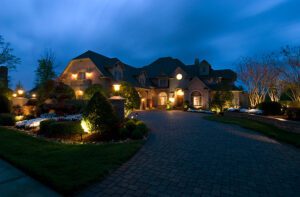Five Questions: Mark Doughty of Thoughtforms
January 26, 2017
Text by Robert Kiener Photography by John Soares
Mark Doughty, president of Thoughtforms custom builders, talks about the new emphasis on science in his industry.
1. How would you define the term “building science”?
Builders used to view a house as a bunch of parts that got plugged together. Now the best builders see a house as a system. Take energy efficiency, for example. In an average house, about a third of the energy is used for productive outcomes like heating, cooking, and lighting, another third is lost through air leakage, and the final third is lost through thermal leakage. Builders who viewed a home as an assembly of parts have made a lot of mistakes in trying to mitigate energy loss, such as designing houses that are too tight and develop dry rot and other problems. Today, people are looking at energy efficiency from an engineering and a science perspective, and building tight houses that are also durable.
2. There are a lot of houses that are 100 years old or more and are still standing. Can the new building science match that?
People look backwards and ask, “Why don’t you build houses like you used to?” We ask, “Did that really work?” If you look at houses that have been around for 100 years plus, they exist because they were inefficient. An old house that is poorly insulated leaks heat, but that heat is also taking moisture away, so the house never rots. So we know we could build a 100-year house by not insulating it—but we also know that’s not responsible. So we are using science to build a house that can last for a century because it’s built properly and efficiently.
3. How does your background as an MIT grad and a business consultant translate into the custom building business?
We are trying to take a customized world and overlay processes to make it predictable. That includes our budgeting, scheduling, quality control, and so on. That is how we distinguish ourselves from other builders. There used to be a joke in the industry that when a client asked, “How long will it take to build my house?” the answer was, “You’ll know I’m done when I’m not parked out front anymore.”
4. How have you improved the system?
We took a cue from many of our clients who had developed their own software successfully and used a rigorous product-development process where everything is budgeted, forecast, and scheduled. We adopted these tools, such as spreadsheets, product management programs, field management programs, and service management software. A lot of the programs we use are scaled-down versions of software used by massive corporations. Many of them are cloud based and are accessible to clients, architects, and everyone in the building and design process. This improves collaboration and helps clients better understand building science.
5. What does that mean to your customers?
Our clients want the best house for the money. We live in a world of data overload, and we try to process that data so clients have information to decide what is most valuable to them. For example, I had clients who talked about a geothermal system but at the same time were considering using a less expensive window. They asked me how I would spend my money. The geothermal was $100,000, so I would rather put that money into better windows. I tried to give them the information they needed about heat loss to make their decision. Nobody can make a good decision if they have bad information. •
Thoughtforms, Acton, Mass., (978) 263-6019, thoughtforms-corp.com
Share
![NEH-Logo_Black[1] NEH-Logo_Black[1]](https://b2915716.smushcdn.com/2915716/wp-content/uploads/2022/08/NEH-Logo_Black1-300x162.jpg?lossy=1&strip=1&webp=1)






